Hike with Jad D’Allura, September 7-8, 2018
Geologist Jad D’Allura, SOU professor emeritus (with red hat, right center), shows Hike and Learn group the summit of Grizzly Peak. Heather Wilson photo
The earth beneath our feet is full of stories just waiting to be told. On Saturday, September 8, a group of eager learners gathered to learn the geologic story of Grizzly Peak. Our guide was Southern Oregon’s resident geology guru, Jad D’Allura. Together, we would trace the history of this well-known landmark, included within the expanded boundary (2017) of Cascade-Siskiyou National Monument.
During a pre-hike talk the night before, Jad brought an audience of more than 70 attendees into the fold, introducing us to the jargon and processes that would help us interpret the geologic stories that surround us. We began by learning about the general characteristics of volcanoes before focusing on features unique to the Bear Creek Valley. Wrapping up the evening with a hands-on quiz (which everyone passed with flying colors), Jad had set the stage for a highly educational trek to the top of Grizzly Peak the following morning.
Our educational journey began even before we made it to the trailhead. We stopped several times on the way up Dead Indian Memorial and Shale City Road to observe signs of a tumultuous past. Across from a dacite quarry, we stopped to inspect large blocks of lava rock dotting a grassy field. These boulders were brought there long ago by a landslide that extends approximately five miles to the skyline ridge.
We stood at the base of this landslide looking up at Grizzly Peak, noticing bands of vegetation that were made possible by variations in the underlying substrate. The inclination of these bands hints at tilting of the rock units that has taken place since their formation. These clues from nature would be the first of many that we observed along our geologic expedition.
After unloading at the trailhead, we discovered more geologic clues almost immediately. Boulders both large and small are scattered all along the trail. When we stopped to observe one of the more impressive specimens, Jad offered some insight. First, we were encouraged to notice the positioning of the rock and how it appeared to have been dropped there on top of the landscape. Second, he directed our attention to the reddish hue of the rock due to the oxidation of iron. This suggests that the rock was exposed to air, perhaps at the edge of a volcanic vent. With these observations in mind, we were able to surmise that we were looking at chunks of bedrock hurled there as spatter during an eruption of Grizzly Peak many millions of years ago.
As we continued, the trail began to flatten out and vegetation became more scarce. Smoke in the distance dashed our chances of glimpsing Mt. McLoughlin, let alone Mt. Shasta or Crater Lake. This was no major hindrance, as our focus was firmly on the geologic features beneath our feet.
Atop the Grizzly Peak formation, we saw what looked like a more continuous lava flow rather than the spatter we had been seeing along the way. We also began to notice platy lava, or lava rock that cooled to form joints that look like flat stacks of dinner plates. Although these joints were parallel to each other, they were inclined about 15-20° to the northeast. This is due to the constant, slow uplift of the Klamath Mountains, a reminder that the landscapes we think we know are constantly under revision by the forces of tectonism.
On our way back to the trailhead, we stepped off trail to stand atop a subtle pile of boulders that marks the summit of Grizzly Peak at 5922 feet (without Jad to point it out, most of us would easily have missed it). As we victoriously summited these rocks, we still had questions swirling in our heads. Geologists have done wonders to shed light on how our landscape came to be, but there is still much that remains a mystery. As Jad says, the clues that geologists have at their disposal are much like a jigsaw puzzle bought at a garage sale - a lot of the pieces are missing and we may or may not even know what we are looking at. With patience and the guidance of a talented teacher, we can come to make sense of the stories that the earth has to tell.
by Heather Wilson, Hike and Learn Coordinator
Photos by Heather Wilson, except where noted.







